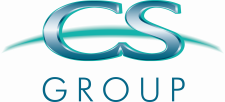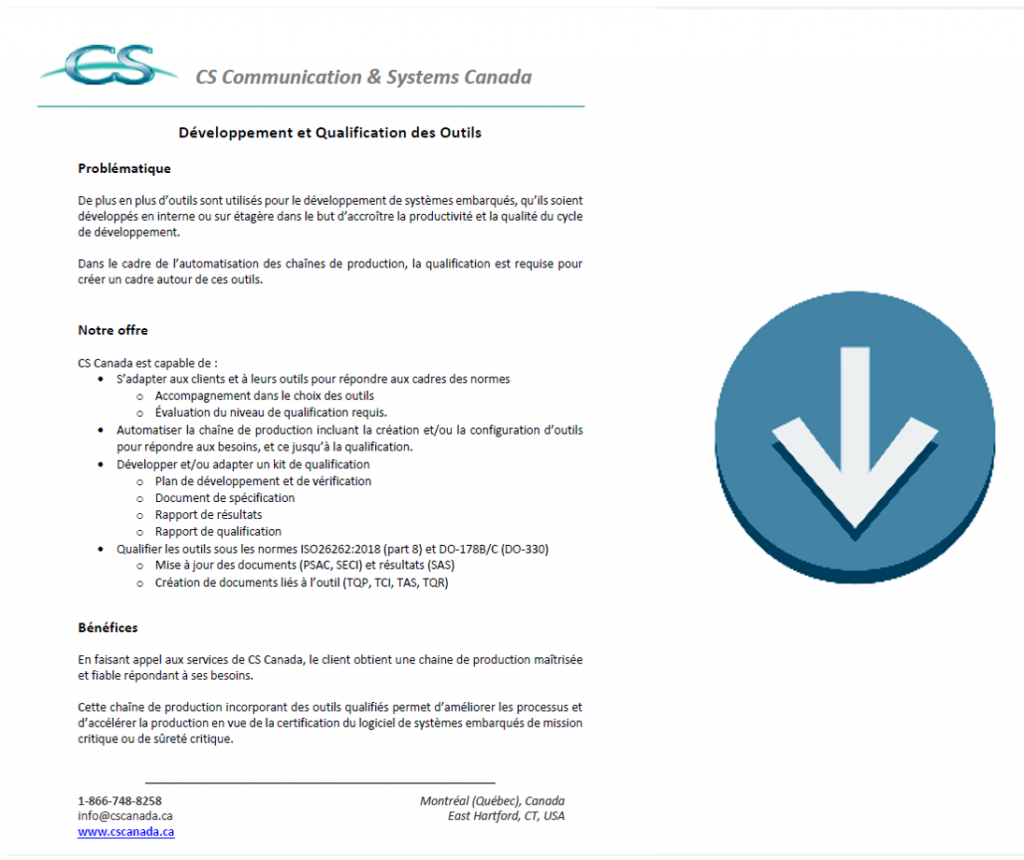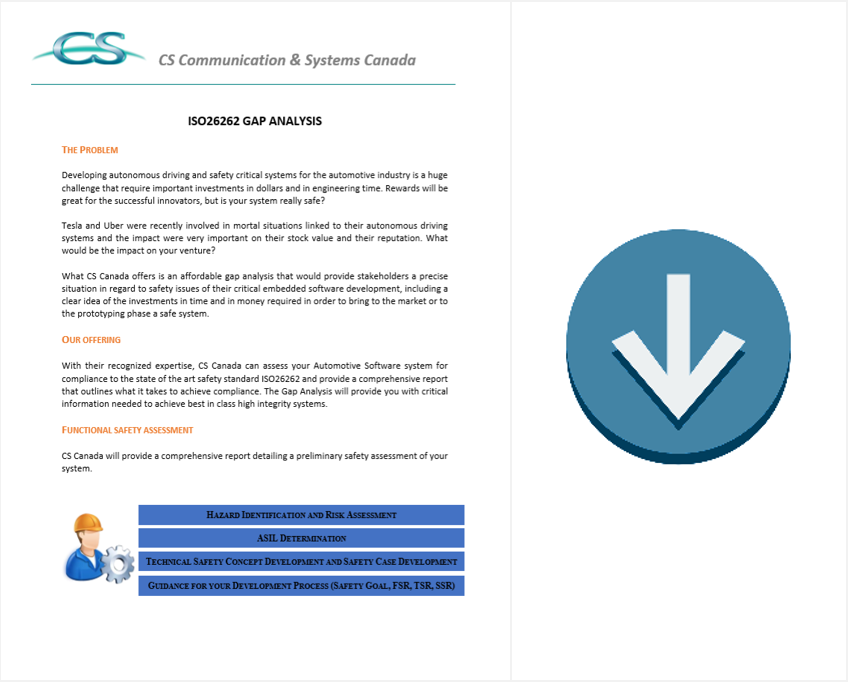ASPICE
From Training to
Certification


What is ASPICE?

What is ASPICE ?
ASPICE challenge: In the modern automotive landscape, embedded software has become critical, steering customer choices beyond traditional factors like horsepower. Today, consumers consider innovative electronic and software features, such as ADAS capabilities or infotainment systems, when making decisions. Software-driven advancements are reshaping the industry, necessitating a standardized approach among stakeholders (OEMs, Tiers 1, and Tiers 2 suppliers).
While ISO 26262 addresses software safety, ASPICE steps in to handle broader elements, including management, support, and non-safety-related embedded software. At the end of the supply chain, OEMs desire a standardized reliability approach, ensuring homogeneity across the entire supply chain.
Why ASPICE ?
Automotive Software Performance Improvement and Capability dEtermination (ASPICE) offers a framework for defining, implementing, and evaluating processes in system development, with a particular focus on software components. Major OEMs globally have adopted ASPICE to enhance product quality, reliability, and assess supplier process capabilities.
ASPICE for system makers
For suppliers, the prospect of achieving ASPICE may initially seem daunting. However, similar to other software norms, it is segmented into categories and groups, allowing for separate development to simplify the initial connection:
- Primary: encompasses the entire production part of the project, starting with the acquisition group for commercial agreements and environmental aspects. It then extends to production, involving supplier management if required, along with system and software development. These last two groups follow the V-cycle, a common practice in software development. Parenthetically, they are also present in ISO26262 part 4 and part 6.
- Supporting: Anything not constituting a product but vital for a high-quality product falls into this category. Support aspects here are generic for software development, including configuration management, change control, quality management, documentation, etc. These principles are well-established in the software industry and require simple adaptation to comply with ASPICE requirements. Some elements from this category are covered in ISO 26262 part 8.
- Organizational: Every project requires a minimum level of organization, and ASPICE concentrates on this aspect within this category. It involves the development of processes related to management (including risk management) and improvement and reuse processes.
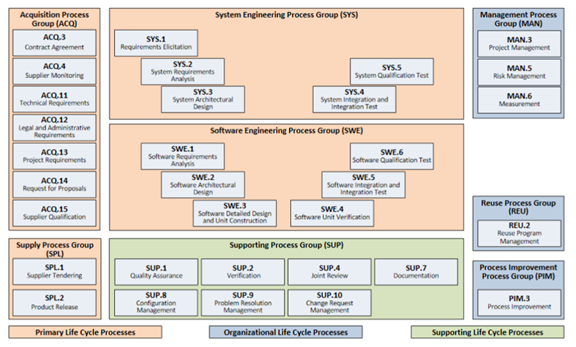
ASPICE, based on these categories and groups, gives processes base practices in details and the applying company shall demonstrate compliance to them. Therefore, they are part of the performance indicators. In addition to these indicators, the generic practices will be part of the capability indicators. The assessor will use both indicators to validate and conclude the capability level from level 0 incomplete process to level 5 innovating process.
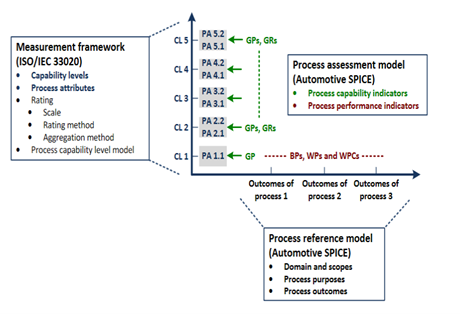
Our Offering
ASPICE answers all these problems at once. It can be worked in addition to the ISO 26262 or stand-alone. This standard gives guidance and requirements for the process development and the assessment of these processes through indicators definition and measurement methods.
To start with this standard, CS Group proposes the following customer journey:
Training
COTS or personalized ASPICE training to introduce the norm, familiarize with ASPICE vocabulary and structure, have a better view of what is awaited to be compliant, target the proper level for the existing, to be developed or under development product
Gap Analysis
CS Group multidisciplinary auditing team works offline and with you to identify the product and company situation regarding the standard. At the end of this analysis, the customer knows how far he is to reach the required level of assessment. A detailed report is used as a start to improve process, method, and product.
DevOPS and Implementation
Some of the activities can be tough to create from scratch, or there is not enough staffing to do the job, or the employees need to stay focus on developing the software. In these situations, CS Group can help develop, implement a portion of it: write processes, create templates for assessment, create documentation, etc. using our proprietary IP to speed up the process.
Prepare for external assessment
At the end of the journey, CS Group can help support the presentation for external assessment by doing the internal one or doing some audits as preparation for the actual assessment.
Continuous improvement
After the assessment, CS Group stays connected with the customer to help him improve and reach the higher level of assessment through expertise meetings or detailed training for specific processes.
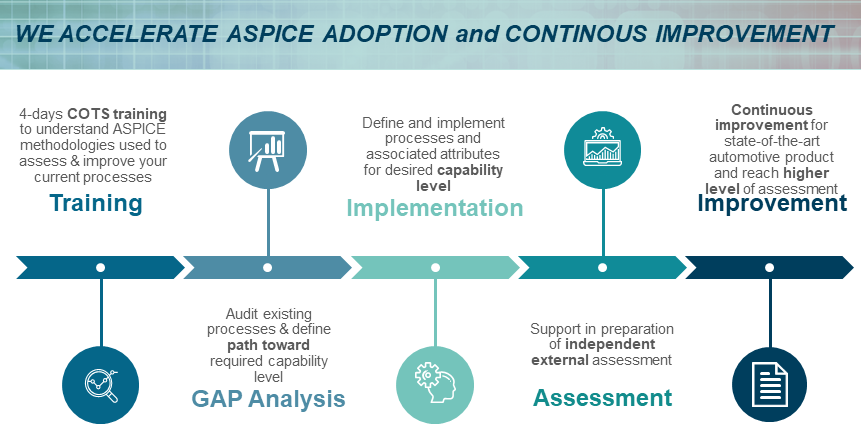
Benefits
CS will be the security net for you: you will not jump alone! You will learn how to deal with the standard and how it gives benefits to your product to go through it.
Why consider CS ?
With 20+ years of experience in ADAS Level 2+ projects combined with airborne fail-operational mode certification, our engineers have crafted innovative approaches and products to accelerate the development, certification, and commercialization of autonomous and electric vehicle embedded technologies.
More than 50 OEMs, Tier 1, and, start-ups from North America (US and Canada) trust us to be their Functional Safety and Cybersecurity Manager and support them in their certification challenges.
Let’s make safe & secure connected mobility a reality today.
